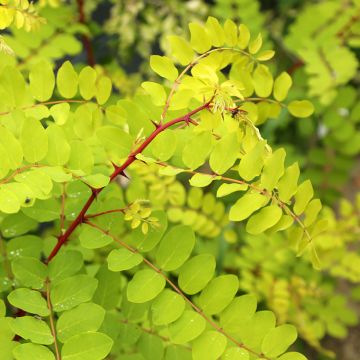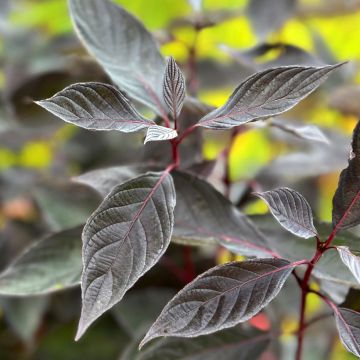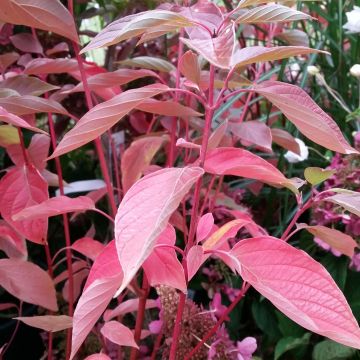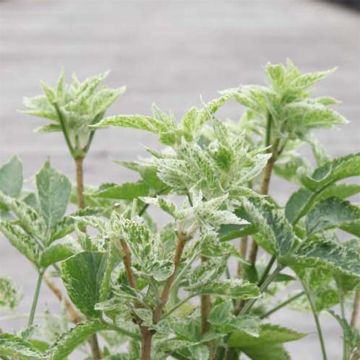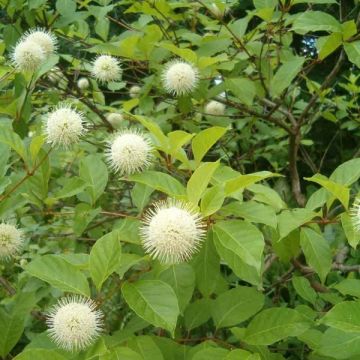

Robinia pseudoacacia Twisty Baby Lace Lady - Black Locust
Robinia pseudoacacia Twisty Baby Lace Lady - Black Locust
Robinia pseudoacacia Twisty Baby® Lace Lady
False acacia, Black Locust, Locust Tree
This item cannot be shipped to the selected country
Oversize package delivery charge from €6.90
Delivery charge from €5.90
Delivery to Corse prohibited
More information
Schedule delivery date,
and select date in basket
This plant carries a 24 months recovery warranty
More information
We guarantee the quality of our plants for a full growing cycle, and will replace at our expense any plant that fails to recover under normal climatic and planting conditions.
Oversize package: home delivery by special carrier from €6.90 per order..
Express home delivery from €8.90.
From €5.90 for pickup delivery and €6.90 for home delivery
Express home delivery from €8.90.
Delivery to Corse prohibited: UE law prohibits the import of this plant from mainland France to Corse as part of the fight against Xylella fastidiosa. Please accept our sincere apologies.
More information
Does this plant fit my garden?
Set up your Plantfit profile →
Description
Robinia pseudoacacia 'Twisty Baby' Lace Lady is a dwarf but vigorous form of the Tortuosa Black Locust, well suited to small gardens and container cultivation on a terrace. A true botanical curiosity, this variety of False Acacia has a completely twisted growth, from the trunk to the frizzy light green foliage that sometimes gives the impression of being affected by an insect or disease. In spring, white and fragrant flower clusters similar to those of wisteria appear here and there, depending on the year. This small deciduous tree grows in a strange way, albeit quickly, turning yellow in autumn, and creates a rather fantastical silhouette against the winter sky that can be enjoyed from the comfort of a window inside the house.
The Twisty Baby False Acacia, often called the Twisted Dwarf Acacia, is an American horticultural creation dating back to 1996. It is derived from the Robinia pseudoacacia, native to the eastern United States. It belongs to the legume family, which includes many plants capable of producing the nitrogen necessary for their growth at their roots, allowing them to thrive in nutrient-poor soils. 'Twisty Baby' exhibits rapid growth (over 50cm (20in) per year), entirely twisted vegetation, and small stature. At maturity, it will reach approximately 4m (13ft) in height and 3m (10ft) in width.
It is a medium-lived tree with a spreading, irregular, and airy habit. As it ages, it spreads widely and the tips of its branches droop slightly. Depending on how this tree is trained, it will develop one or more short and twisted trunks. The bark, initially smooth and brown in colour, then cracks into large, thick, and interlacing greyish crests. The branches are composed of a few, slender, twisted, and strongly spiralled branches that become brittle once woody, almost devoid of thorns. They are reddish-brown in colour. The young shoots develop in a corkscrew shape. The leaves, deciduous, pendant, 15cm (6in) long, are divided into 9 to 15 ovoid leaflets measuring 2 to 3cm (1in). They have a paper-like texture and are rolled up, with a bright green colour on the upper side and a greyish-green colour on the lower side. They turn a beautiful yellow colour in autumn. The irregular flowering occurs in May on individuals at least 5 years old. The pendulous inflorescences, 10 to 12cm (4 to 5in) long, consist of white-cream butterfly-like flowers. This highly fragrant flowering, with an orange scent, attracts pollinating insects. It is followed by the formation of rare flat pods, 4 to 6cm (2in) long, dark brown, containing a few brown bean-shaped seeds. They persist on the branches throughout winter. Note that the Twisty Baby False Acacia, unlike other varieties, does not produce suckers.
This Twisty Baby False Acacia will delight enthusiasts of unique and collectable plants. Easy to grow in ordinary, even poor soil, it is not recommended for excessively windy locations. It is particularly magnificent when planted as a standalone specimen, showcasing its distinctive silhouette against a grey sky, especially during winter. Placed in a large container on a terrace, it will exhibit slower growth and quickly become a focal point throughout the year. It could also be incorporated into a Japanese-style garden, in a sunny location. It could be paired with a summer clematis (Clematis viticella) that will spread out as a carpet at its base and enthusiastically climb its twisted vegetation.
Report an error about the product description
Robinia pseudoacacia Twisty Baby Lace Lady - Black Locust in pictures
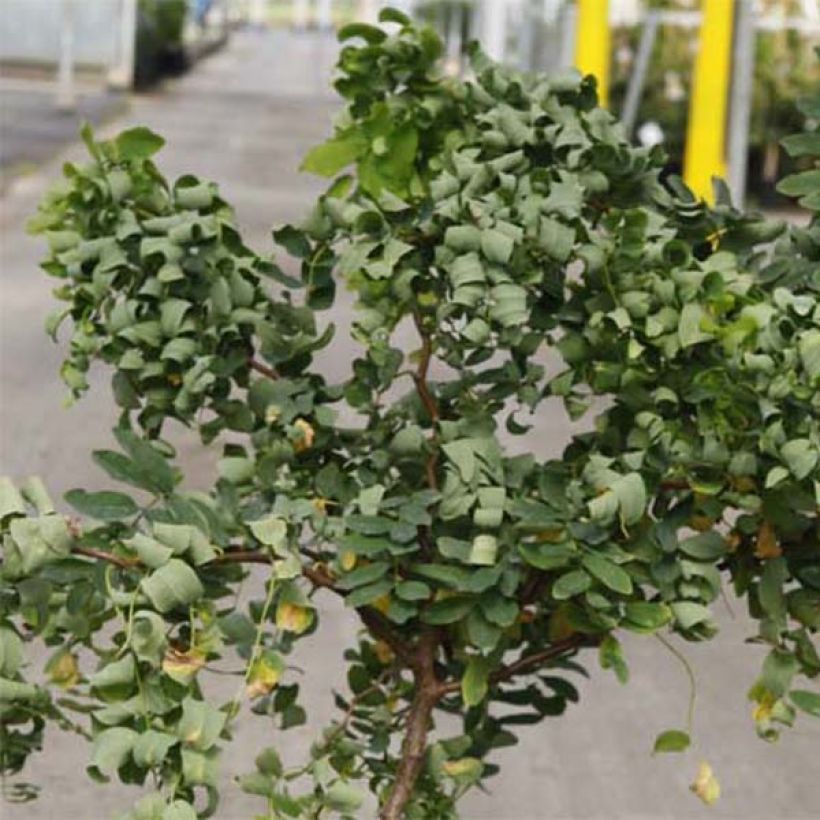

Plant habit
Flowering
Foliage
Botanical data
Robinia
pseudoacacia
Twisty Baby® Lace Lady
Papilionaceae
False acacia, Black Locust, Locust Tree
Cultivar or hybrid
Other Robinia - Black Locust
Planting and care
The Twisty Baby Robinia pseudo acacia is easy to grow and is not demanding in terms of soil, as long as it is properly drained and sufficiently deep. It thrives in the sun, sheltered from strong winds and sea spray as its branches are brittle and the wind can damage its flowering. The soil should be light and well-drained, even poor, preferably moist especially when the tree is young: its rapid growth requires abundant but spaced out waterings during the first two or three years. Once established, it tolerates summer drought well. It fears excess clay and constantly wet soils, which suffocate the roots and can cause them to rot. Its resistance to atmospheric pollution is excellent, making it valuable in urban areas. From August to October, prune dead or weak wood to prevent sap flow. Also remove branches that cross within the canopy to maintain the proper habit of the Robinia. Beware of voles that love bark and attack the base of plants. This small tree has few natural enemies.
Planting period
Intended location
Care
-
, onOrder confirmed
Reply from on Promesse de fleurs
Hedge shrubs
Haven't found what you were looking for?
Hardiness is the lowest winter temperature a plant can endure without suffering serious damage or even dying. However, hardiness is affected by location (a sheltered area, such as a patio), protection (winter cover) and soil type (hardiness is improved by well-drained soil).

Photo Sharing Terms & Conditions
In order to encourage gardeners to interact and share their experiences, Promesse de fleurs offers various media enabling content to be uploaded onto its Site - in particular via the ‘Photo sharing’ module.
The User agrees to refrain from:
- Posting any content that is illegal, prejudicial, insulting, racist, inciteful to hatred, revisionist, contrary to public decency, that infringes on privacy or on the privacy rights of third parties, in particular the publicity rights of persons and goods, intellectual property rights, or the right to privacy.
- Submitting content on behalf of a third party;
- Impersonate the identity of a third party and/or publish any personal information about a third party;
In general, the User undertakes to refrain from any unethical behaviour.
All Content (in particular text, comments, files, images, photos, videos, creative works, etc.), which may be subject to property or intellectual property rights, image or other private rights, shall remain the property of the User, subject to the limited rights granted by the terms of the licence granted by Promesse de fleurs as stated below. Users are at liberty to publish or not to publish such Content on the Site, notably via the ‘Photo Sharing’ facility, and accept that this Content shall be made public and freely accessible, notably on the Internet.
Users further acknowledge, undertake to have ,and guarantee that they hold all necessary rights and permissions to publish such material on the Site, in particular with regard to the legislation in force pertaining to any privacy, property, intellectual property, image, or contractual rights, or rights of any other nature. By publishing such Content on the Site, Users acknowledge accepting full liability as publishers of the Content within the meaning of the law, and grant Promesse de fleurs, free of charge, an inclusive, worldwide licence for the said Content for the entire duration of its publication, including all reproduction, representation, up/downloading, displaying, performing, transmission, and storage rights.
Users also grant permission for their name to be linked to the Content and accept that this link may not always be made available.
By engaging in posting material, Users consent to their Content becoming automatically accessible on the Internet, in particular on other sites and/or blogs and/or web pages of the Promesse de fleurs site, including in particular social pages and the Promesse de fleurs catalogue.
Users may secure the removal of entrusted content free of charge by issuing a simple request via our contact form.
The flowering period indicated on our website applies to countries and regions located in USDA zone 8 (France, the United Kingdom, Ireland, the Netherlands, etc.)
It will vary according to where you live:
- In zones 9 to 10 (Italy, Spain, Greece, etc.), flowering will occur about 2 to 4 weeks earlier.
- In zones 6 to 7 (Germany, Poland, Slovenia, and lower mountainous regions), flowering will be delayed by 2 to 3 weeks.
- In zone 5 (Central Europe, Scandinavia), blooming will be delayed by 3 to 5 weeks.
In temperate climates, pruning of spring-flowering shrubs (forsythia, spireas, etc.) should be done just after flowering.
Pruning of summer-flowering shrubs (Indian Lilac, Perovskia, etc.) can be done in winter or spring.
In cold regions as well as with frost-sensitive plants, avoid pruning too early when severe frosts may still occur.
The planting period indicated on our website applies to countries and regions located in USDA zone 8 (France, United Kingdom, Ireland, Netherlands).
It will vary according to where you live:
- In Mediterranean zones (Marseille, Madrid, Milan, etc.), autumn and winter are the best planting periods.
- In continental zones (Strasbourg, Munich, Vienna, etc.), delay planting by 2 to 3 weeks in spring and bring it forward by 2 to 4 weeks in autumn.
- In mountainous regions (the Alps, Pyrenees, Carpathians, etc.), it is best to plant in late spring (May-June) or late summer (August-September).
The harvesting period indicated on our website applies to countries and regions in USDA zone 8 (France, England, Ireland, the Netherlands).
In colder areas (Scandinavia, Poland, Austria...) fruit and vegetable harvests are likely to be delayed by 3-4 weeks.
In warmer areas (Italy, Spain, Greece, etc.), harvesting will probably take place earlier, depending on weather conditions.
The sowing periods indicated on our website apply to countries and regions within USDA Zone 8 (France, UK, Ireland, Netherlands).
In colder areas (Scandinavia, Poland, Austria...), delay any outdoor sowing by 3-4 weeks, or sow under glass.
In warmer climes (Italy, Spain, Greece, etc.), bring outdoor sowing forward by a few weeks.



































